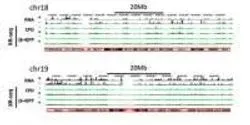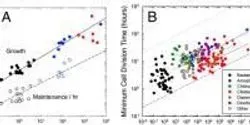Genome

The new experimental assay can help scientists find the precise locations of repair of DNA damage caused by UV radiation and common chemotherapies. The invention could lead to better cancer drugs or improvements in the potency of existing ones.

The switchgrass exhibited mosaic symptoms—splotchy, discolored leaves—characteristic of a viral infection, yet tested negative for known infections. Deep sequencing, a new technology, revealed the plants were infected with a new virus in the genus mastrevirus, the first of its kind found in North America.

A pair of genetics researchers at Iowa State University found striking patterns in the building blocks of DNA in a wide variety of species, according to their recently published paper.

According to the public databases, there are currently approximately 1,900 locations in the human genome that produce microRNAs (miRNAs), the small and powerful non-coding molecules that regulate numerous cellular processes by reducing the abundance of their targets. New research published in the Proceedings of the National Academy of Sciences (PNAS) this week adds another roughly 3,400 such locations to that list. Many of the miRNA molecules that are produced from these newly discovered locations are tissue-specific and also human-specific. The finding has big implications for research into how miRNAs drive disease.














